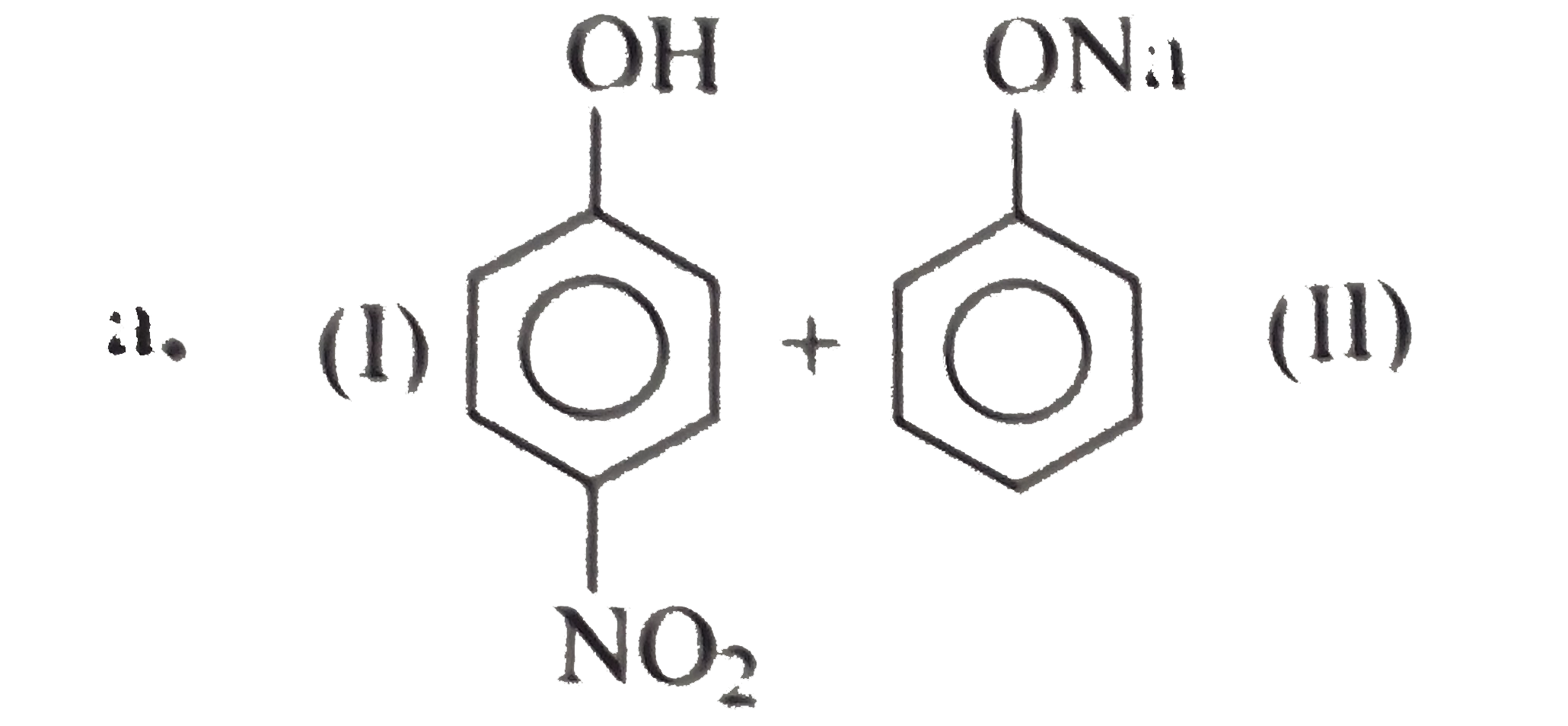Which of the following reaction is not possible




To determine which of the given reactions is not possible, we will analyze each reaction involving aniline (C6H5NH2) and the reagents provided.
1. Identify Aniline:
Aniline is an aromatic amine with the formula C6H5NH2. The nitrogen atom in the amine group has a lone pair of electrons, which can participate in chemical reactions.
2. Reactions with H2SO4 (Sulfonation):
- Aniline can undergo sulfonation when treated with concentrated sulfuric acid (H2SO4).
- The lone pair on the nitrogen increases the electron density on the benzene ring, making it more reactive towards electrophilic substitution.
- The major product will be para-sulfanilic acid due to less steric hindrance at the para position.
- Conclusion: This reaction is possible.
3. Reactions with HNO3 and H2SO4 (Nitration):
- Aniline can also react with a nitrating mixture (HNO3 and H2SO4) to introduce a nitro group (NO2) onto the benzene ring.
- Similar to sulfonation, the electron-donating effect of the amine group directs the incoming electrophile to the ortho and para positions, with the para product being favored.
- Conclusion: This reaction is possible.
4. Reactions with Ac2O (Acetylation):
- Acetic anhydride (Ac2O) can react with aniline to form acetanilide.
- The nitrogen's lone pair attacks the carbonyl carbon of acetic anhydride, leading to the formation of an acylated product.
- Conclusion: This reaction is possible.
5. Reactions with AlCl3 (Friedel-Crafts Alkylation):
- When aniline is treated with aluminum chloride (AlCl3), a Lewis acid, the nitrogen's lone pair coordinates with AlCl3, forming a complex.
- This complex formation deactivates the ring towards electrophilic substitution reactions, making Friedel-Crafts alkylation impossible.
- Conclusion: This reaction is not possible.
Final Answer:
The reaction that is not possible is the one involving aniline with AlCl3 (Friedel-Crafts alkylation).
Answer:
Option 4: Reaction with AlCl3 is not possible.
Aniline is an aromatic amine with the formula C6H5NH2. The nitrogen atom in the amine group has a lone pair of electrons, which can participate in chemical reactions.
- Aniline can undergo sulfonation when treated with concentrated sulfuric acid (H2SO4).
- The lone pair on the nitrogen increases the electron density on the benzene ring, making it more reactive towards electrophilic substitution.
- The major product will be para-sulfanilic acid due to less steric hindrance at the para position.
- Conclusion: This reaction is possible.
- Aniline can also react with a nitrating mixture (HNO3 and H2SO4) to introduce a nitro group (NO2) onto the benzene ring.
- Similar to sulfonation, the electron-donating effect of the amine group directs the incoming electrophile to the ortho and para positions, with the para product being favored.
- Conclusion: This reaction is possible.
- Acetic anhydride (Ac2O) can react with aniline to form acetanilide.
- The nitrogen's lone pair attacks the carbonyl carbon of acetic anhydride, leading to the formation of an acylated product.
- Conclusion: This reaction is possible.
- When aniline is treated with aluminum chloride (AlCl3), a Lewis acid, the nitrogen's lone pair coordinates with AlCl3, forming a complex.
- This complex formation deactivates the ring towards electrophilic substitution reactions, making Friedel-Crafts alkylation impossible.
- Conclusion: This reaction is not possible.
The reaction that is not possible is the one involving aniline with AlCl3 (Friedel-Crafts alkylation).
Option 4: Reaction with AlCl3 is not possible.
Topper's Solved these Questions
- JEE MAIN 2021Book:JEE MAINS PREVIOUS YEARChapter:JEE MAIN 2021Exercise:SECTION-A
Explore 100 Videos
- JEE MAIN 2021Book:JEE MAINS PREVIOUS YEARChapter:JEE MAIN 2021Exercise:SECTION-B
Explore 50 Videos
- JEE MAINBook:JEE MAINS PREVIOUS YEARChapter:JEE MAINExercise:CHEMISTRY
Explore 150 Videos
- JEE MAIN 2022Book:JEE MAINS PREVIOUS YEARChapter:JEE MAIN 2022Exercise:Question
Explore 561 Videos
Similar Questions
Knowledge Check
Which of the following reactions is not possible ?
A B
B C(I)CH3OH+C2H5Ona(II)D(I)ClCH2COOH+CH3COONa(II)
C(I)CH3OH+C2H5Ona(II)D(I)ClCH2COOH+CH3COONa(II)Which of the following reaction not possible :
AKMnO4+SO2→Colour changeBK2Cr2O7+SO2→ Colour changeCKMnO4+CO2→ Colour changeDFeCl3+SO2→ Colour changeWhy the following reaction is not possible?
ABoth Cr2O2−7andFe3+ are reducing agentsBBoth Cr2O2−7andFe3+ are oxidising agentsCCr2O2−7 is a strong oxidsing agent while Fe3+ is a weak oxidising agent.DThe solution is acidic in nature



 .
.